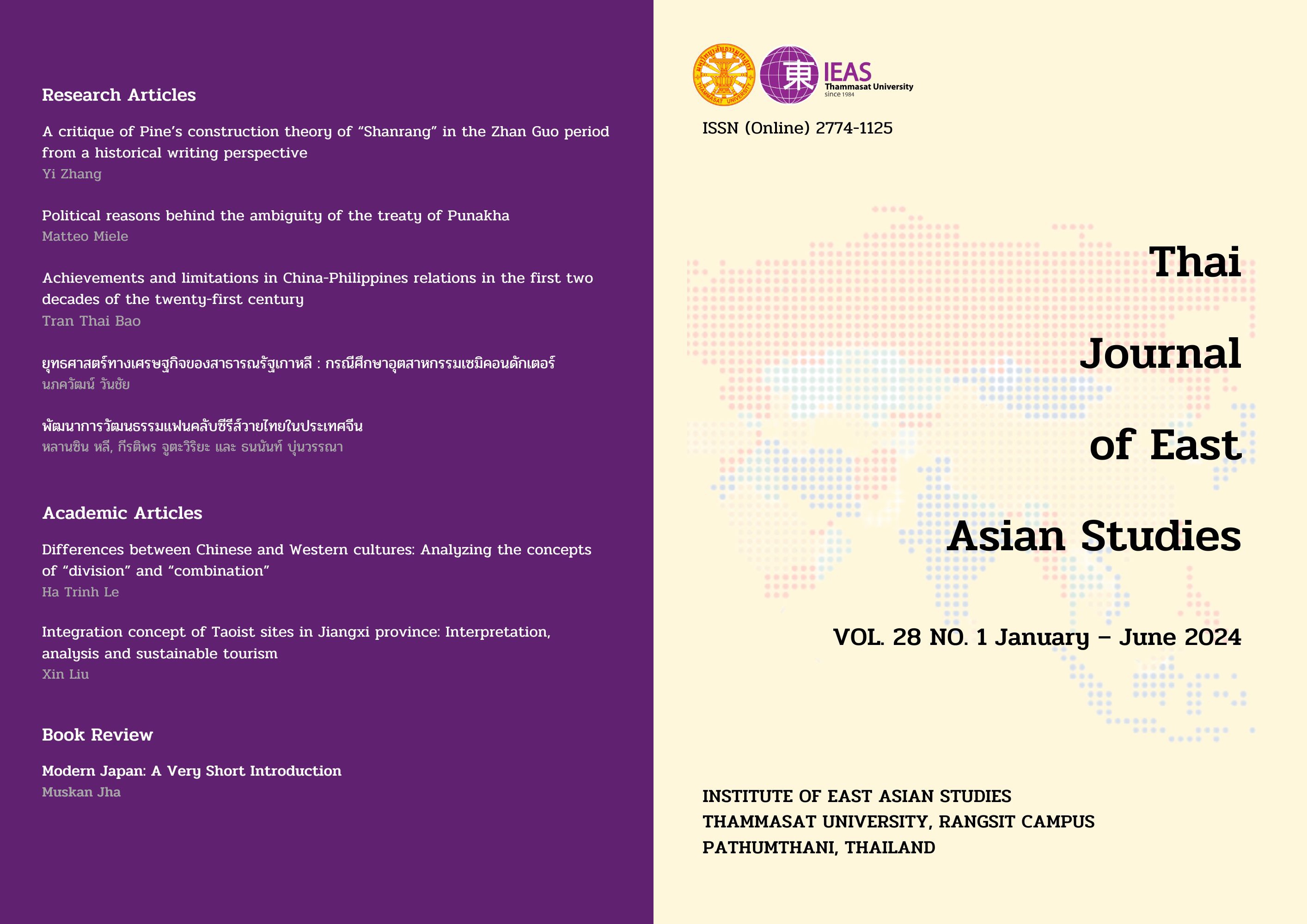Differences between Chinese and Western cultures: Analyzing the concepts of “division” and “combination”
Keywords:
Chinese and Western philosophy, division, combination, nationalism, societyAbstract
Over thousands of years of development from primitive society to the present, Chinese and Western civilizations have created their own distinctive cultures under their different natural environments and historical conditions. The well-known scholar Qian Mu once said that: Westerners are good at dividing, Chinese people are good at combination as these are close to their desires. Hence, this manuscript explores the fundamental differences between Chinese and Western cultures through the lens of “division” and “combination”. Chinese culture, deeply rooted in the concept of “combination”, emphasizes harmony, unity, and collective responsibility, reflecting its agricultural society and Confucian values. In contrast, Western culture, grounded in “division”, focuses on individualism, personal freedom, and the separation of powers, shaped by its diverse geographical conditions and philosophical traditions. This study delves into historical developments, social structures, and ideological underpinnings that have led to these distinct cultural paradigms. By examining the country and society, human relationships, environment, and ideology, the manuscript elucidates how these cultural principles influence the respective civilizations. The analysis aims to provide a comprehensive understanding of how “division” and “combination” manifest in various aspects of Chinese and Western cultures, highlighting the importance of these concepts in shaping cultural identity and social dynamics.
Downloads
References
Descartes, R. (1998). Regulae Ad Directionem Ingenii. Rodopi.
Dong, Z. (2016). Luxuriant Gems of the Spring and Autumn (S. A. Queen & J. S. Major, Eds.). Columbia University Press. https://doi.org/10.7312/dong16932
English Standard Version Bible. (2001). ESV Online. https://esv.literalword.com/
Li, D. (1918) The Fundamental Difference between Eastern and Western civilizations, 3, p.45-50. Journal of Yanji.
Li, Z. (2010). Shìjiè lìshǐquán zhīdào. Beijing Yanshan Press.
Liang, S. (2005). Zhōngguó wénhuà yàoyì p85. Shanghai Century Publishing Group.
Locke, J. (1980). The Second Treatise of Civil Government. Hackett Publishing Rousseau.
Lu, S. (2013). “Fēn” yǔ “hé”——lùn zhōng xīfāng wénhuà gēnběn jīngshén zhī bǐjiào. Journal of Beijing Electronic Science and Technology Institute, 21(3), 74-78, 90.
Lu, W. (2013). Zhōngguó gǔdài tiānxià guān de yìshí xíngtài jiàngòu jí qí zhìdù shíjiàn, 3, p.11. Research on China’s Frontier History and Geography.
Marx, K. (1867). The Division of Labour in Manufacture, and the Division of Labour in Society. https://www.marxists.org/archive/marx/works/1867-c1/ch14.htm#n1
Ministry of Foreign Affairs - the People’s Republic of China. (2023, October 1). Introduction of Italy. https://www.fmprc.gov.cn/web/gjhdq_676201/gj_676203/oz_678770/1206_679882/1206x0_679884/
Rousseau, J.-J. (2004). The Social Contract. Penguin Books.
Wan, J. (2017, August 22). Zhōngguó rén de “jiā guó qínghuái” zěnyàng yì yú xīfāng. Chinakongzi. https://www.chinakongzi.org/dajiatan/201708/t20170828_142918.htm
Wang, X. (2014). Zhuāngzi nèi piān xīn jiě·zhuāng zǐ tōng shū zhèng,qí wù lùn. Zhonghua Book Company Publishing House.
Wang, Y., Si, H., Zhang, A., & Jin, L. (2008). Laozi’s Tao Te Ching. Shandong Science and Technology Press.
Yang, H. (2014). Lǐdàzhāo juǎn (zhōngguó jìndài sīxiǎngjiā wénkù). Renmin University of China Press.
Yao, X. (2000). An Introduction to Confucianism p. 140. Cambridge University Press.
Yu, Y. (2012). Zhōngxī zìrán guān de duìbǐ. Market Modernization, 696.
Downloads
Published
How to Cite
Issue
Section
License
Copyright (c) 2024 Thai Journal of East Asian Studies

This work is licensed under a Creative Commons Attribution-NonCommercial-NoDerivatives 4.0 International License.



